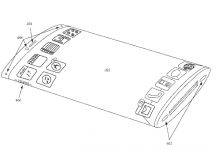 Mark Gladding of the E-Books Just Published site has posted a blog entry on using Stanza with the iPhone. (We previously covered Gladding’s piece on “E-book advice for authors” last month.) He writes that he was initially skeptical about the idea, preferring converting e-books into speech-synthesized audiobooks for listening over reading from a small screen.
Mark Gladding of the E-Books Just Published site has posted a blog entry on using Stanza with the iPhone. (We previously covered Gladding’s piece on “E-book advice for authors” last month.) He writes that he was initially skeptical about the idea, preferring converting e-books into speech-synthesized audiobooks for listening over reading from a small screen.
However skeptical he started out, Gladding was greatly impressed by Stanza’s display quality and overall ease of use. However, he is disappointed that the Stanza desktop application does not include images from converted books in other formats. (It also strips formatting, such as bold and italic emphasis.) He also remarks on the way that PDF formatting is messed up by conversion, though lays the blame more at the feet of the PDF format than Stanza Desktop.
He concludes:
The iPhone and iPod touch combined with Stanza make for a great e-reading experience. I was pleasantly surprised with how easy on the eye reading from the screen was. I had no trouble reading for an hour straight on the train. If you already own an iPhone or iPod touch you really must give Stanza and ebooks a try.
A number of times, I have seen people who think they wouldn’t enjoy reading on a small device discover after trying it that it is less onerous than they had feared. It is nice to see another example.
However, it is easy for e-book advocates’ enthusiasm for the gadgets to blind them to the fact that some people’s distaste for e-books is not simply a matter of screen size or clarity. Other factors may be involved.
Curious to see what kind of answers might turn up, I posted a question to Mahalo.com: “What is keeping you from reading e-books? What would get you to give e-books a try?” I received 17 answers of varying length, from a couple of sentences to a paragraph elaborating each of nine separate points. Some of them were quite instructive.
Some of them were the usual complaints from people who just prefer the aesthetics of traditional paper books. This has always seemed a little silly to me—you don’t read a book for what it feels like; you read it for what is in it—and has been heard often enough to become one of the more ridiculed clichés of the e- versus p- debates. Still, there are people who feel that way.
(Historically, some e-book manufacturers have tried to address this by making devices with two separate screens connected by a hinge, or developing more ink-like displays. To my mind, this is a mistake—as with the “uncanny valley” of animated humans, the more “paper-book-like” you make a device, the more obvious it will be that it is not one.)
One of the more commonly brought up points was price—both the price of the books themselves, and the price of the devices. Some people felt that e-books should not cost as much as printed books, and others felt that several hundred dollars was too much to pay for an e-book device.
Some people also mentioned the size of the screen as a factor on small devices such as iPods. One person complained about not being able to thumb through pages as quickly as a book. Interestingly enough, only two out of the seventeen responses mentioned DRM.
The answer I chose as “best” (and thus awarded a $1.50 tip), from a user with the handle “bardseyes,” brought up nine points: visual comfort, user interface, “suspension of disbelief” (by which he meant distraction by the device itself), availability of content, speed of access, device/content-related issues (such as formatting, loading books, and DRM), social perception (not wanting to look like “one of ‘those people'” even though he is one), aesthetics, and lack of compelling superiority.
I could dispute some of his points—for instance, a Palm or iPhone can have you back into a book just as fast as opening it (faster if you consider that you’d have to flip through the book to find the page unless you had marked it)—but there is no doubt he had put some thought into it, and was not just having a knee-jerk reaction against the idea. (Though to be fair, so had many of the other answers.)
These are the sorts of answers that publishers, device manufacturers, and e-book sellers alike need to read—for most of these are objections that must be overcome for e-book devices to win over those skeptics who are not swayed by actually trying it.






























One argument for p-books instead of e-books is the publishers currently don’t release new books in both formats on the same day. So far I have watched several authors books be released and be available in all the “big-box” stores up to and including a week before it becomes available at Fictionwise. In one case it was over a month before the e-book became available after the original publication release date.
With a paper book the reader is the interface. This economy of navigation has a number of attributes and legibility is one of them. To begin there is nothing more illegible than a black screen. This level of illegibility is disturbing as the reader must consider battery life, the instability of a life of e-reading and the uncertainties of navigation back for re-reading years later. Another economy of navigation is the two page spread in paper format; you don’t need to change the view for every page. Also you can easily cross reference between various paper books. Also the navigation is quicker in paper for transition between storage, selection, opening and delivery.